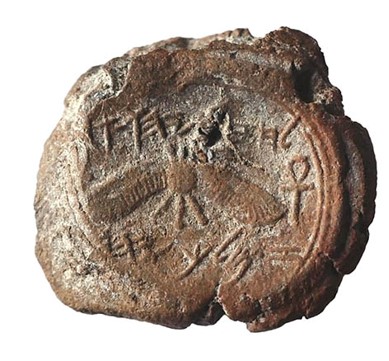
I have wondered if mankind will ever find the “holy grail” of Old Testament archaeology: Noah’s Ark. And, I have wondered if mankind will ever find or definitively identify the literal Holy Grail, Jesus’ cup of the Last Supper.
Here’s why I wonder. In Hebrews 11 we’re told that it’s impossible to please God without faith. Impossible. Could it be, then, that God might thwart our efforts to locate and identify these Bible-proving artifacts, thus preserving a necessary leap of faith?
This question came to my mind recently when I saw an email subject headline in my inbox, “Biblical Archaeology’s Top 10 Discoveries of 2018.” While none of the 2018 discoveries are a holy grail or the Holy Grail, they are significant, and one even comes from the era of the Holy Grail, a seal ring bearing the name “Pilates” believed to belong to Pilate or a member of his cadre.
Among other notable finds: a seal impression bearing the signature of “Isaiah the Prophet” and a beka weight that was used to measure the temple tax during the First Temple era.
So, a couple of questions: As a youth worker and discipler of teens, how do you find yourself processing these and other discoveries? Do they help you validate your faith? Do you feel that this information will appeal to those teens who need a level of reasoning and facts to believe? What do you do with discoveries that appear to contradict the biblical record?
Jesus touched on this subject in his conversation with Thomas at the close of the gospel of John. Thomas, who was pegged as the doubter, had declared that he needed to feel the nail marks in Jesus’ hands and the wound of the spear in his body. After Jesus graciously invited Thomas to touch the sacred wounds, Thomas expressed his belief.
This brought a famous reaction from Jesus: “Have you believed because you have seen me? Blessed are those who have not seen and yet have believed.”
Jesus did not use this instance to disparage Thomas for needing to see evidence, but rather he brought encouragement to those who believe without seeing. And while modern day archeology may continually add evidence to the biblical record (and at times seem to contradict it, which also may be part of God’s plan to preserve the step of faith), we in the modern era fall into the category of those who “have not seen, yet believe.” That’s why we are called “believers” and not “reasoners” or “fact finders.” There will always be a gap, big or small, that will call for at least a step, and maybe a leap, of faith. Let’s take those steps and leaps and enjoy the blessings Jesus promised.
Pictured: The royal seal of Hezekiah, king of Judah, was discovered in the Ophel excavations under the direction of archaeologist Eilat Mazar. From here.